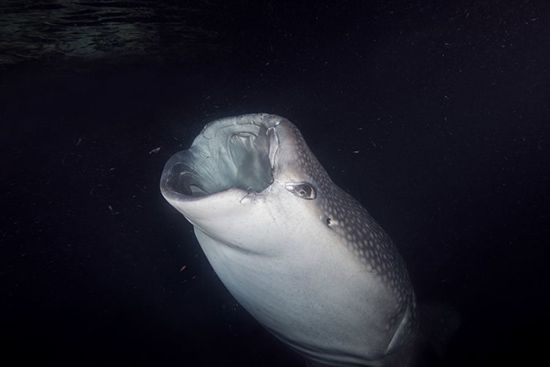地球上的大型动物因为人类的口腹之欲而走向灭亡

|
像捕杀食肉这类的人类活动正在将地球上的大型动物逼入灭绝之境。
期刊《保育文献》在周三发表的一篇新研究文章称,这些“巨型动物”种群的过度利用及其栖息地丧失所带来的影响,再加上疾病、污染和全球气候变化,越发明确地表明,人类正在引发第六次大规模的灭绝事件。
人类收获——包括捕猎食肉,卵的采集,以及捕鱼时无意的间接渔获,对受到调查的近300个物种构成了最大的威胁,这些物种已被列入世界自然保护联盟的濒危物种红色名录。
该调查的数据涵盖众多已知物种,例如鲸鲨、棱皮龟、非洲象、中国娃娃鱼以及多种大猩猩、犀牛、金枪鱼和石斑鱼物种。调查显示,70%的受调物种均出现了种群数量下滑的现象,其中五分之三接近濒危状态。
该研究的首席作者、俄勒冈州立大学的生态学教授威廉·瑞博在一则声明中指出:“我们的研究发现,巨型动物都快让我们吃绝种了。”
就其负面影响来看,这些数字不仅仅是人类食物源的问题。该研究称,这些物种种群数量的减少将“破坏生态系统为人类提供的服务,并为其他物种和进程带来渐进式的连锁生态反应。”
事实在于,巨型动物的繁育数量和次数通常比小型物种少,但教育和全球合作可以帮助恢复种群数量。例如,自1986年禁止商业捕鲸之后,大多数巨型鲸鱼的种群数量出现了改善。
该研究提到:“我们认为,任何成功的保护策略都必须考虑将减少对巨型动物的直接捕杀作为一个首要的解决方案。”该研究同时还表示,“这类策略对食物供应基本上没有什么影响,但经济价值、文化实践和社会规范可能会让这一局势变得十分复杂。”因此,公众教育和法律措施是不可或缺的。
瑞博表示,“保护剩余的巨型动物将变得十分困难和复杂。这其中有经济因素的阻力,也有文化和社会方面的障碍。然而,如果我们对此不加以考虑、批评,并纠正相关行为,人类捕猎能力的不断加强可能会让我们蚕食掉很大一部分地球上仅剩的巨型动物。”(财富中文网) 译者:冯丰 审校:夏林 |
Human activities like hunting for meat are pushing the world’s largest animals into extinction.
The effects of the over-exploitation and habitat loss of these “megafauna” species face—combined with disease, pollution, and global climate change—”provide mounting evidence that humans are poised to cause a sixth mass extinction event,” says a new study published Wednesday in the journal Conservation Letters.
Human harvesting—including hunting for meat, gathering eggs, and unintended bycatching in fisheries—is the top threat to the nearly 300 species studied, all of which are on the International Union for Conservation of Nature’s Red List of threatened species.
The study’s data includes many recognizable species like the whale shark, leatherback sea turtle, African elephant, Chinese giant salamander, and various gorilla, rhinoceros, tuna, and grouper species. According to the study, 70% of all those studied have declining populations, with and 3 out of 5 threatened by extinction.
“Our results suggest we’re in the process of eating megafauna to extinction,” William Ripple, the study’s lead author and ecology professor at Oregon State University, said in a statement.
These numbers mean bad news for more than just human food sources. Declines in these species will “jeopardize ecosystem services to humans and generate cascading evolutionary and ecological effects on other species and processes,” says the paper.
Megafauna are particularly vulnerable due to the fact they typically produce fewer offspring and reproduce less often than smaller species, but education and global cooperation can promote recovery. Most great whales, for example, have seen improvements since the 1986 ban on commercial whaling.
“We argue that any successful conservation strategy must consider minimizing the direct killing of megafauna as a priority solution,” reads the study, adding that “the impacts of such a strategy on food supply would likely be minimal, but economic values, cultural practices, and social norms might complicate the picture.” Thus, public education and legal measures are essential.
“Preserving the remaining megafauna is going to be difficult and complicated,” said Ripple. “There will be economic arguments against it, as well as cultural and social obstacles. But if we don’t consider, critique and adjust our behaviors, our heightened abilities as hunters may lead us to consume much of the last of the Earth’s megafauna.” |













